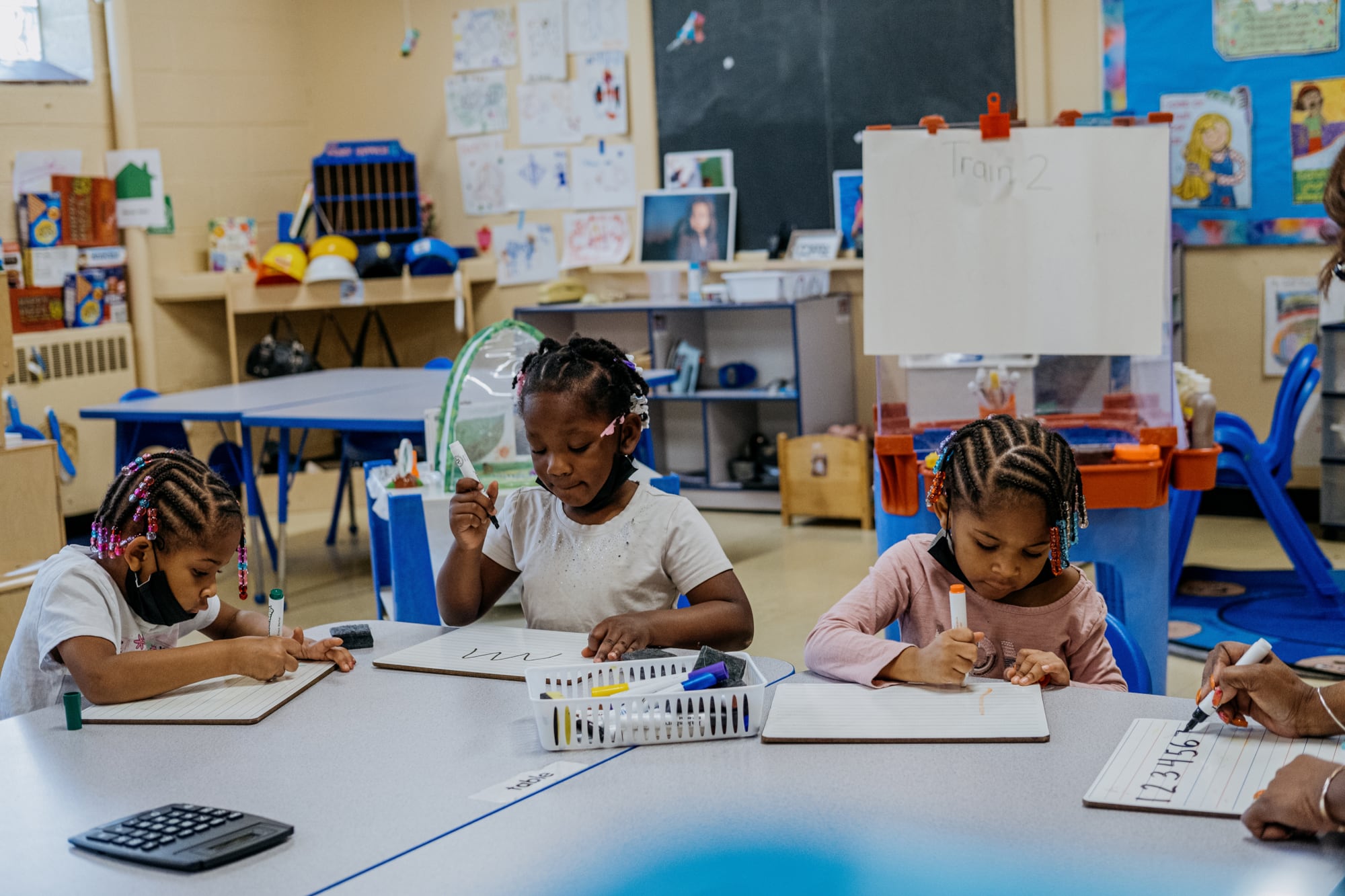Sign up for Chalkbeat’s free weekly newsletter to keep up with how education is changing across the U.S.
After preschool enrollment took a nosedive during the pandemic, a new report offers some encouraging news. A record share of young children enrolled in preschool last school year, and state spending on preschool reached an all-time high.
New universal preschool initiatives in several states contributed to those increases, but federal COVID relief funding also played a crucial role, according to a report released Thursday by the National Institute for Early Education Research at Rutgers University.
Half of the new spending on state preschool programs last year was backed by pandemic aid, the researchers found.
That money helped improve access — preschool enrollment was up in nearly every state — but it also raises real questions about whether states will be able to sustain their investments after that federal funding runs out this fall. Some of the 26 states that spent COVID aid on preschool last year have plans to bridge the gap, but others do not.
“It’s important to make sure that they all do, so we don’t move backwards,” said Steven Barnett, the director of the research institute and a co-author of the report. Already, “the nation remains very far away from providing a high-quality preschool education to every child at age 4, much less at age 3.”
The problem of the fiscal cliff isn’t unique to early education — K-12 schools are also grappling with how to fill budget holes left by expiring pandemic aid. State officials and school leaders nationwide are making difficult decisions about whether they can afford to keep many kinds of pandemic-era investments, including school mental health staff, intensive tutoring programs, and expanded summer school. Some districts, such as Chicago and New York City, also expanded preschool access with COVID dollars.
Earlier in the pandemic, COVID aid helped keep preschool teachers employed and child care providers open. But last school year, much of the money was spent to get more kids into preschool. Those strategies included recruiting and training preschool teachers, raising pay for preschool teachers at community-based providers, which typically pay less than schools, and doing more outreach to parents.
States spent at least $571 million in COVID aid on their preschool programs during the 2022-23 school year, the report found, though it’s likely more, as not all of the 26 states were able to say how much pandemic aid they used. That made up a small share of the overall $11.7 billion that states put toward their preschool programs that year. But it accounted for half of the $1.2 billion in new state spending on preschool.
Some states put a large chunk of their COVID dollars toward preschool expansion, but have come up with a plan to at least partially fill that gap.
North Dakota, for example, paid for its Best in Class program for 4-year-olds entirely with COVID relief funds last year. But state lawmakers recently approved putting $12 million in state money toward that program over the next two years, which will more than cover the gap left by expiring pandemic aid.
In Michigan, officials spent $83 million in COVID relief dollars on the state’s Great Start Readiness program, which offers free preschool to 4-year-olds primarily from low-income families. That made up a quarter of all state spending on preschool last year, and helped the program enroll an additional 2,200 children.
For this school year, Michigan lawmakers approved spending an extra $74 million in state funds to help make up for the loss of COVID funding. That investment comes as Gov. Gretchen Whitmer works to fulfill her pledge to make preschool free for all 4-year-olds.
Matt Gillard, the president and CEO of Michigan’s Children, a nonprofit that works on early education policies, said he’s not surprised that Michigan is one of the states that put a lot of COVID aid toward increasing preschool access, and now is using that investment as a springboard to get closer to a universal preschool program.
“Pre-K has been a priority with bipartisan support in Michigan for a long time,” he said. “We have a lot of need in communities, and the COVID relief dollars provided an opportunity for the state to expand that.”
But the picture is less clear elsewhere. Virginia spent around $16.3 million in COVID money last year on the state’s mixed-delivery program, which funds preschool at community-based providers and in other non-school settings. COVID funds make up the bulk of the spending for that program again this school year. Whether the state can sustain that spending will be determined by future budget negotiations, the report notes. (The Virginia Department of Education did not respond to a request for comment.)
That states led by both Republican and Democratic governors used federal COVID aid to expand preschool suggests there could be bipartisan support for the federal government to offer more money for this work, Barnett said. That could be especially important as gaps in preschool access and quality continue to grow between states.
“New state initiatives for universal preschool have already started to reshape the preschool landscape,” said Allison Friedman-Krauss, an assistant research professor at Rutgers and the report’s lead author. “Which states will be left behind as all these other states move forward?”
Kalyn Belsha is a senior national education reporter based in Chicago. Contact her at kbelsha@chalkbeat.org.






